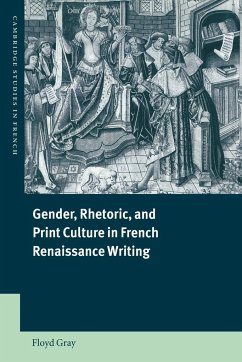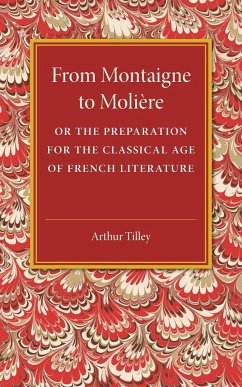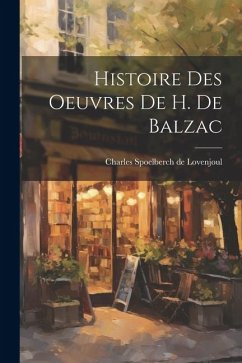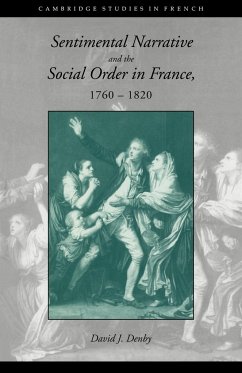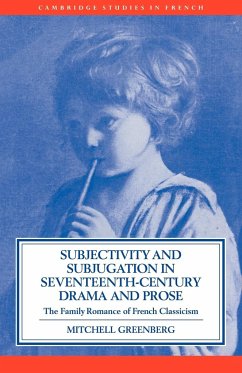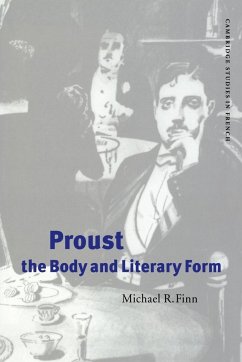
Literature and Material Culture from Balzac to Proust
The Collection and Consumption of Curiosities
Herausgeber: Sheringham, Michael
Versandkostenfrei!
Versandfertig in 1-2 Wochen
58,99 €
inkl. MwSt.
Weitere Ausgaben:

PAYBACK Punkte
29 °P sammeln!
A study of the significance of curiosities and collecting in nineteenth- and early twentieth-century French literature.This book addresses the issues of collecting, consuming, classifying and describing the curiosities, antiques and objets d'art that proliferated in French literary texts during the last decades of the nineteenth century. After Balzac made such issues significant in canonical literature, the Goncourt brothers, Huysmans, Mallarmé and Maupassant celebrated their golden age. Flaubert and Zola scorned them. Rachilde and Lorrain perverted them. Proust commemorated their last mome...
A study of the significance of curiosities and collecting in nineteenth- and early twentieth-century French literature.
This book addresses the issues of collecting, consuming, classifying and describing the curiosities, antiques and objets d'art that proliferated in French literary texts during the last decades of the nineteenth century. After Balzac made such issues significant in canonical literature, the Goncourt brothers, Huysmans, Mallarmé and Maupassant celebrated their golden age. Flaubert and Zola scorned them. Rachilde and Lorrain perverted them. Proust commemorated their last moments of glory. Focusing on the bibelot (the modern French term for knick-knack, curiosity or other collectible), Janell Watson shows how the sudden prominence given to curiosities and collecting in nineteenth-century literature signals a massive change in attitudes to the world of goods, which in turn restructured the literary text according to the practical logic of daily life, calling into question established scholarly notions of order. Her study makes an important contribution to the literary history of material culture.
Review quote:
"a complex and fascinating story...a memorable book that is indispensable for readers interested in the study of consumer culture and in the connection between realism and cultural production in the nineteenth century."
L'Esprit Createur
Table of contents:
Acknowledgments; Introduction; 1. The bibelot: a nineteenth-century object; 2. The logic(s) of material culture: imitation, accumulation, and mobility; 3. The fashionable artistic interior: social (re)encoding in the domestic sphere; 4. Flaubert's 'Musées reçus': Bouvard and Pécuchet's consumerist epistemology; 5. Narrate, describe, or catalogue? The inventory form in Balzac, the Goncourts, and Huysmans; 6. The parlour of critical theory: Reading dwelling space across disciplines; 7. Rearranging the Oedipus: fantastic and decadent floor-plans in Gautier, Maupassant, Lorrain, and Rachilde; Notes; Bibliography; Index.
This book addresses the issues of collecting, consuming, classifying and describing the curiosities, antiques and objets d'art that proliferated in French literary texts during the last decades of the nineteenth century. After Balzac made such issues significant in canonical literature, the Goncourt brothers, Huysmans, Mallarmé and Maupassant celebrated their golden age. Flaubert and Zola scorned them. Rachilde and Lorrain perverted them. Proust commemorated their last moments of glory. Focusing on the bibelot (the modern French term for knick-knack, curiosity or other collectible), Janell Watson shows how the sudden prominence given to curiosities and collecting in nineteenth-century literature signals a massive change in attitudes to the world of goods, which in turn restructured the literary text according to the practical logic of daily life, calling into question established scholarly notions of order. Her study makes an important contribution to the literary history of material culture.
Review quote:
"a complex and fascinating story...a memorable book that is indispensable for readers interested in the study of consumer culture and in the connection between realism and cultural production in the nineteenth century."
L'Esprit Createur
Table of contents:
Acknowledgments; Introduction; 1. The bibelot: a nineteenth-century object; 2. The logic(s) of material culture: imitation, accumulation, and mobility; 3. The fashionable artistic interior: social (re)encoding in the domestic sphere; 4. Flaubert's 'Musées reçus': Bouvard and Pécuchet's consumerist epistemology; 5. Narrate, describe, or catalogue? The inventory form in Balzac, the Goncourts, and Huysmans; 6. The parlour of critical theory: Reading dwelling space across disciplines; 7. Rearranging the Oedipus: fantastic and decadent floor-plans in Gautier, Maupassant, Lorrain, and Rachilde; Notes; Bibliography; Index.






